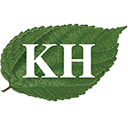
Global Natural Sweeteners Market in 2021
2022.09.13
According to Valuates Reports' latest report, the global market for natural sweeteners is expected to grow from $22.49 billion in 2020 to $27.94 billion by 2026, with a CAGR of 3.7%. In this article, let us review the market situation of major sweeteners and new sweeteners in 2021.
Erythritol
According to data from Innova Market Insights, the sweetener with the highest CAGR worldwide between July 2 016 and June 2021 was erythritol, reached 32%, while stevia, another popular sweetener, contributed a CAGR of 13%. Erythritol has become the hottest sweetener in the world.
Erythritol is the only sugar alcohol product on the market that is naturally transformed and extracted by biological fermentation. It belongs to zero-calorie sweetener, does not participate in human blood glucose metabolism, and its sweet taste is similar to sucrose. Compared with synthetic sweeteners such as sucralose, erythritol can be classified as natural sweetener. Compared with natural sweeteners such as stevioside, erythritol has gained acceptance among consumers because of its purer taste and no after-bitterness.
However, the sweetness of erythritol is only 70% of that of sugar, so the amount of erythritol is large, but the production capacity is seriously insufficient, so there is a shortage of erythritol supply in the world. Since this year, the market price of erythritol has been rising from CNY 16,000/ton at the beginning of the year, forcing enterprises to reduce consumption in order to reduce costs, and how to reduce the amount of erythritol while maintaining the same taste has become a new topic in the industry.
Stevioside
Consumer interest in stevia also continues to grow, according to Innova Market Insights, the number of stevia-containing products launched worldwide grew by more than 16% annually between 2016 and 2020. The global stevia market was $637.1 million in 2018 and is expected to reach US $1,169.4 million by 2026, with a CAGR of 8.0% from 2019 to 2026. According to Ingredion's internal analysis, the global stevia market is estimated to be worth more than $1.6 billion by 2028.
As the stevia components with high sweetness and no bitter aftertaste, such as Rebaudioside M,Rebaudioside D, gradually occupy the mainstream market, promoting the improvement of regulations in various countries will become a major event in stevia industry in 2021. In order to further regulate the market for stevia sweeteners, the European Union has published new labelling guidelines which modify (EC) No 1333/2008 and (EU) No 231/2012, dividing the original stevia (E 960) into two parts. These include stevioside from stevia (E 960A) and stevioside from enzymatic production (E 960C). To provide consumers with greater clarity and transparency, to help consumers better identify the source of stevioside used in food and to deepen their understanding of stevioside from natural plant sources.
In addition, The European Food Safety Authority (EFSA) approved the biotransformation of stevia extracts from Reb M, Reb D and Reb AM. SweeGen's next generation Bestevia Rebaudioside M (Reb M) stevia sweetener is approved in the European Union SweeGen's highly soluble and zero-calorie stevia solution, Bestevia Rebaudioside B, has received GRAS approval in the United States market.
Monk fruit
The global monk fruit market was $396.34 million in 2019 and is expected to reach $532.17 million by 2026, with a CAGR of about 4.3%. Because it can be labeled as monk fruit directly and not as an additive, monk fruit is considered to be a sugar substitute that meets the cleaning label. According to SPINS data, usage of monk fruit among food and drinks with cleaning labels increased 15.7% in the US in 2020. With plenty of health benefits, the market is likely to gain even more momentum in the coming years.
In addition to its great advantages in blood pressure and blood sugar management, monk fruit also has a certain easing effect on respiratory diseases such as cough. In addition, monk fruit has a high antioxidant content and a long shelf life. In terms of market, the monk fruit market is divided into natural and organic markets. By region, the monk fruit market can be divided into five main regions: Latin America, North America, Asia Pacific, Europe and the Middle East and Africa. North America is expected to make the largest contribution to the monk fruit market. Europe will be one of the most lucrative markets in the coming years, as consumers in the region demand natural zero-calorie sweeteners. The Asia-pacific region, Latin America, the Middle East and Africa and other markets will become very potential areas, these markets are not fully exploited, there is a need for business expansion, especially in China, the origin of monk fruit.











